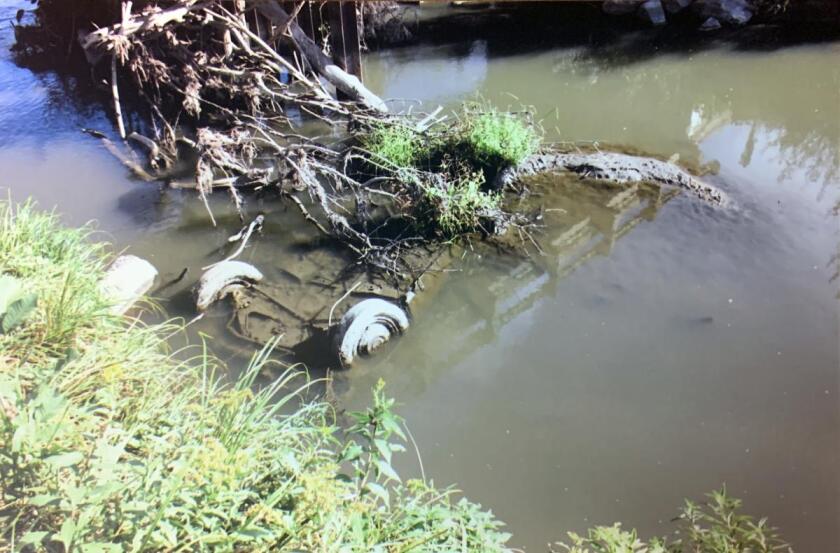The disappearance of two 17-year-old girls in 1971 forever changed the community of Vermillion, South Dakota.
Pam Jackson and Sherri Miller with high school students on the way to a party when the Studebaker they were driving seemingly vanished into the dark night.
ADVERTISEMENT
“Vanished in Vermillion,” peels back the layers of complexity that hide behind headlines. Through years of added research and interviews with those involved, Raguse tells the story in a way that captures the nuances of it all.
True crime books often focus on the crime itself and the investigation, or lack thereof, that follows. This story shows what happens when law enforcement makes critical mistakes in the investigation, and how those errors can impact the lives of those caught in the tangled web.
In this episode, Trisha Taurinskas shares her thoughts on the book, along with parts of her interview with Lou Raguse.
Full story: https://www.inforum.com/news/the-vault/vanished-in-vermillion-peels-back-layers-of-complexity-in-infamous-south-dakota-cold-case?ajs_aid=da7b69ca-81f8-41d5-90bb-fd7337a4d74e
The case remained cold for decades, yet a renewed interest was born when the state’s cold case unit was created. The state’s investigative body honed in on one man—one family—they believed was likely responsible. In their efforts to prove the prevailing theory, chaos was created—not just for the one man who stood accused, but also for his family members.
Despite multiple search warrants, excavation digs and charges filed, a conviction was never reached.
In 2013, the mystery was solved when the upside down, in a creek near the area of their final destination.
Lou Raguse was a dogged television reporter in South Dakota as the quest for justice unfolded. He lived this story from the inside out, covering every aspect of the investigation and forging relationships with those involved.

Raguse’s latest book, “Vanished in Vermillion,” peels back the layers of complexity that hide behind headlines. Through years of added research and interviews with those involved, Raguse tells the story in a way that captures the nuances of it all.
True crime books often focus on the crime itself and the investigation, or lack thereof, that follows. This story shows what happens when law enforcement makes critical mistakes in the investigation, and how those errors can impact the lives of those caught in the tangled web.
Critical errors at the start of the investigation paved the way for a domino effect of added turmoil for the families of the victims and those who stood accused. It could also be argued that the turmoil spilled over into the lives of those who got caught up in the investigation as well.
ADVERTISEMENT
A cold case without a crime
Jackson and Miller were following a group of three boys who had agreed to show them the way to the gravel pit keg party. Somewhere along the route, the boys noticed the girls’ vehicle was out of sight. They assumed nothing of it until the time.

When the girls’ families realized the next morning that neither of them had made it home, panic set in throughout the households of the tight-knit South Dakota community. There was one individual, though, who wasn’t concerned: Sheriff Arnie Nelson.
Nelson’s neglectful decision to label the girls as runaways proved detrimental to the case.
Had someone else been at the helm of the Clay County Sheriff’s Office, it’s possible the course of history with this case could have taken a dramatically different turn. If someone had traced the route the girls had taken, their vehicle might have been discovered in the creek where it was ultimately excavated decades after the fact.
"This case wouldn't even exist today because they would have been found probably the very next day," Raguse said in an interview with Forum News Service.
When the state’s cold case unit was created in 2004, the girls’ case received renewed interest. With Trevor Jones at the helm of the investigation, he honed in on one man: David Lykken.
Lykken lived on the family farm, miles from where the girls were last seen. By the 1990s, he had a history of assaulting women. A family member became the central supporting figure in the theory, stating that Lykken’s family members feared him, and would do anything to help him cover up a crime.
ADVERTISEMENT
That family member also claimed to have begun to remember incidents that could link Lykken and the family to the crime. Those memories were used to obtain search warrants for the Lykken family farm, which state investigators searched multiple times in its renewed effort to bring justice to the girls’ families.
Nothing, though, was ever uncovered on the farm.
Charges were eventually filed against Lykken after an inmate serving time alongside him allegedly caught his confession on tape. The tape was used to file murder charges against Lykken. The headlines created an uproar in the community, and devastation for the Lykken family.
The charges were dropped after the state realized that the man confessing on the tapes was not Lykken.
The case, again, went cold. Until 2013.
Answers unfolding
Raguse was working as a reporter in Buffalo, New York, at the time. He received an emotional call from a family member of the girls who had gone missing. There, before the news hit the local outlets, Raguse learned the vehicle had been discovered by a local resident, in a creek.
"And he just kind of blurted out, 'They found the car. They found the Studebaker,'" Raguse said.
ADVERTISEMENT
He was shocked — and the questions immediately started forming in his brain.
"My mind immediately goes, whoa," Raguse said. "Are they going to recharge the Lykkens now? Or what does this mean?"
The family of Pam Jackson learned of the discovery together, as they gathered for the funeral of Pam Jackson’s dad, Oscar Jackson. He had died days earlier at the age of 102. It was his life’s quest to find his daughter.
With the strong community belief that Lykken was still somehow involved, those who learned of the discovery still theorize that Lykken dumped the vehicle in the creek. Yet the investigation, which called on experts in automotive accidents, revealed that the girls had driven off the road.
It was an accident.
Raguse examines why people still believe, after everything that unfolded, that Lykken is still somehow involved.
He leaves the reader wondering why, too.
ADVERTISEMENT























